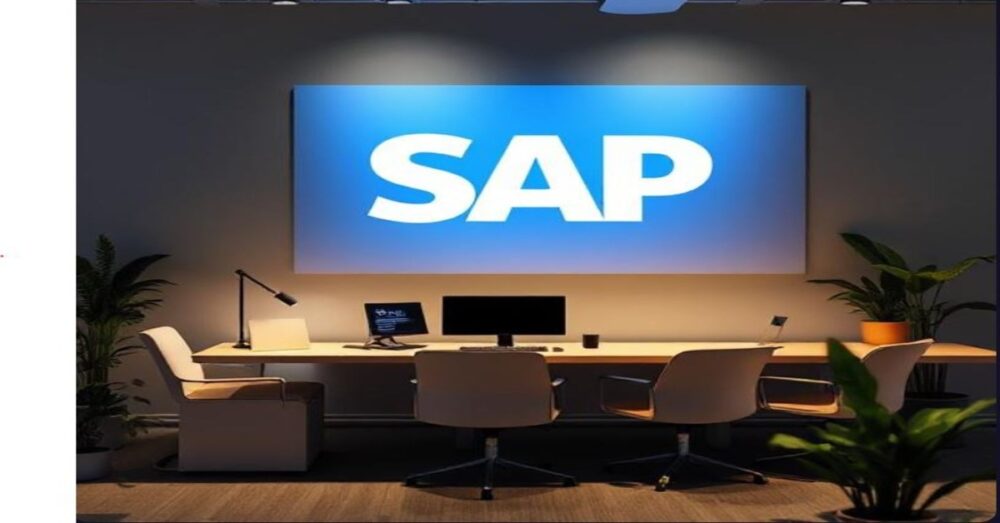
In SAP S/4HANA, “project type” refers to the different kinds of projects such as Greenfield (new) implementation, Brownfield (conversion), Rollout (for new regions or entities), Upgrade, and Support. SAP S/4HANA also categorizes operational projects into Customer Projects (for client services) and Internal Projects (for internal value and cost management)
Introduction
Choosing the right project type in SAP S/4HANA is one of the first—and most decisive—choices you’ll make. Whether you’re a student learning SAP, a consultant preparing for an engagement, or a business leader planning a digital program, clarity on project types helps you set scope, timeline, skills, budget, and risk controls.
This guide breaks down the major S/4HANA project types, how they differ, when to use each, the phases (using SAP Activate), key deliverables, sample WBS, common risks, success metrics, and practical tips. You’ll walk away with a blueprint to choose and execute the right approach, fast.

Why “Project Type” Matters
Scope control: Determines which processes are in/out, whether data is migrated, and how much customization is permitted.
Timeline realism: Greenfield vs. conversion vs. rollout can vary from weeks to many months.
Team skills: E.g., system conversion demands strong Basis and custom code remediation; greenfield emphasizes Fit-to-Standard.
Budgeting: Data volume, interfaces, localization, and compliance drive cost.
Change management: The more process re-imagination, the bigger the organizational change plan.
The Main SAP S/4HANA Project Types
1) New Implementation (Greenfield)
When to choose:
- Legacy landscape is highly customized, fragmented, or outdated.
- You want to redesign processes using Fit-to-Standard and SAP Best Practices.
- You’re moving to S/4HANA Cloud or a clean on-premise instance.
Highlights:
- Build from scratch with standard content, Fiori apps, CDS views, embedded analytics.
- Data is cleansed and migrated from legacy.
- Customizations are minimized and moved to SAP BTP extensions where feasible.
Typical phases (SAP Activate):
- Discover: Value case, solution scope, rapid demos.
- Prepare: Project kickoff, landscape setup, user access, initial backlog.
- Explore: Fit-to-Standard workshops, process gaps, WRICEF backlog.
- Realize: Configure, develop extensions, test (unit, SIT, UAT), data migration cycles.
- Deploy: Cutover rehearsal, go-live, hypercare.
- Run: Stabilize and continuous improvement.
Key deliverables: Business process flows, configuration workbooks, WRICEF inventory, data migration plan, test scripts, cutover plan, training packs.
2) System Conversion (Brownfield)

When to choose:
- You already run SAP ERP (ECC) and want to convert to S/4HANA while preserving data and many processes.
- You want a faster path with less change—though remediation is required.
Highlights:
- Technical conversion using SUM/DMO, custom code adaptation, simplification item fixes.
- Mandatory housekeeping: Business partner conversion, credit management, materials, etc.
- Still includes testing, data validation, and change management.
Critical activities:
- Readiness checks and Simplification Item Catalog review.
- Custom code analysis and remediation (ATC).
- Add-ons and interfaces compatibility.
- Fiori adoption plan post-conversion.
3) Rollout/Template Deployment
When to choose:
- You have an S/4HANA global template and want to deploy to new countries/business units.
- Focus is on localization, legal/tax, and master data harmonization.
Highlights:
- Leverages template processes; limited deviations.
- Strong emphasis on org structure mapping, local statutory requirements (GST, SAF-T, etc.), and language/time zone needs.
4) Selective Data Transition (SDT)
When to choose:
- You want parts of existing data and processes carried over—more flexible than pure greenfield or conversion.
- Useful for carve-outs, mergers, or selective history retention.
Highlights:
- Complex data selection and transformation.
- Requires specialist tools and experienced partners.
5) Migration/Consolidation
When to choose:
- Consolidate multiple ERPs into one S/4HANA core.
- Migrate data from non-SAP systems.
Highlights:
- Deep master data governance (MDG), de-duplication, data quality KPIs.
- Interface design to connect legacy satellites.
6) Enhancement/Optimization
When to choose:
- You’re live on S/4HANA and want to add new scope: Fiori apps, analytics, EWM, TM, GTS, Group Reporting, or BTP extensions.
Highlights:
- Small to medium programs with rapid value delivery.
- Continuous delivery (CI/CD), feature toggles, A/B training.
7) Support & AMS (Application Management Services)
When to choose:
- Post go-live stabilization and continuous run.
- SLA-based incident, service requests, small changes, and compliance updates.
Highlights:
- ITIL processes, release calendar, regression testing, and monitoring (e.g., SAP Cloud ALM/SolMan).
8) Pilot/Proof of Concept (PoC)
When to choose:
- Validate business case, performance, or usability in a limited scope.
- Typically time-boxed with demo data and select users.
9) Carve-Out / M&A / Divestiture
When to choose:
- You need to separate entities or integrate acquisitions quickly.
- Strong data separation, cutover choreography, and legal controls.
Choosing the Right Type: A Quick Decision Matrix
| Business Situation | Recommended Type | Why |
|---|---|---|
| Heavy legacy customization, want standardization | Greenfield | Clean slate, adopt best practices |
| Existing ECC with solid processes | Conversion | Faster path, retain data & org model |
| Global template to multiple countries | Rollout | Consistency with localized compliance |
| Keep only selected history/scope | Selective Data Transition | Flexibility with targeted data |
| Multiple ERPs to one core | Migration/Consolidation | Harmonization, MDG, integrations |
| Already live, add value | Enhancement | Incremental ROI |
| Stabilization & operations | Support/AMS | SLAs, predictable run |
| Validate feasibility quickly | Pilot/PoC | Low-risk testing |
| Spin-off or acquisition | Carve-Out/M&A | Legal, data separation, fast cutover |
Standard Phases and Deliverables (SAP Activate Lens)
- Discover – Value case, scope hypothesis, high-level roadmap.
- Prepare – Project governance, tools (Cloud ALM/SolMan), landscape sizing, access.
- Explore – Fit-to-Standard, backlog creation (WRICEF), gap decisions.
- Realize – Configuration, extension on SAP BTP, integrations, migration sprints.
- Deploy – Cutover rehearsal, go-live, hypercare.
- Run – KPIs tracking, release cadence, continuous improvement.
Core deliverables across types: Scope statement, RAID log, backlog, configuration workbooks, test strategy and scripts (Unit/SIT/UAT), migration strategy and mapping, training and OCM plan, cutover plan, hypercare plan.
Typical Roles and Responsibilities
Sponsor / Program Manager – steering, budget, KPI ownership.
Project Manager / Scrum Master – planning, risks, sprint ceremonies.
Solution Architect(s) – end-to-end design governance.
Functional Consultants (FI/CO, SD, MM, PP, EWM, TM, etc.) – configuration and testing.
Technical Team – Basis, integrations, ABAP/BTP, security, Fiori.
Data Team – data model, cleansing, migration, reconciliation.
Test Lead – test plan, tools, defect triage.
OCM/Training Lead – communications, role mapping, enablement.
Business SMEs & Key Users – process sign-offs, UAT, adoption.
Sample WBS (Work Breakdown Structure) Snippet
1. Initiation: Charter, stakeholders, governance, KPIs.
2. Blueprint/Explore: Workshops, process maps, backlog, sign-offs.
3. Build/Realize: Config, extensions, reports/analytics, interfaces.
4. Data: Data model, ETL mappings, mock loads, reconciliation.
5. Testing: Unit, SIT, UAT, performance, security.
6. Cutover & Go-Live: Runbook, freeze windows, dress rehearsal.
7. Hypercare: Defect resolution, stabilization metrics.
8. Transition to AMS: Handover docs, SLAs, knowledge transfer.
KPIs to Track by Project Type
Greenfield: % standard adoption, # WRICEF items, UAT pass rate, training completion, time-to-close books.
Conversion: Simplification items closed, custom code remediated, batch runtimes, go-live incident volume.
Rollout: Localization gaps resolved, template deviations, master data readiness, cutover duration.
Migration: Duplicate reduction, master data quality score, reconciliation variances.
Enhancement: Release frequency, lead time for change, adoption rate of new Fiori apps.
Support: SLA compliance, MTTR, change success rate, regression defects.

Risks & Mitigations
- Scope creep: Tight change control, product owner sign-offs.
- Data quality: Early profiling, MDG, iterative mock loads.
- Integration complexity: Clear API contracts, early system-to-system tests.
- Under-resourcing SMEs: Protected time for key users, decision SLAs.
- Over-customization: Extension on SAP BTP rather than core mods.
- Change resistance: OCM, role-based training, Fiori hands-on labs.
Tools & Accelerators You’ll Use
SAP Activate methodology & Best Practices content.
SAP Cloud ALM / Solution Manager for requirements, testing, and operations.
Fiori apps, CDS views, embedded analytics for real-time insight.
ATC for custom code checks; SUM/DMO for conversions.
SAP BTP (CAP, RAP) for side-by-side extensions and integrations.
Test automation frameworks and data migration tools.
Practical Tips
Start with a type decision workshop: goals, constraints, legacy assessment.
Use a standard-first mindset; only gap where value is provable.
Plan two mock cutovers minimum; rehearse downtime and back-out plan.
Don’t skip security & controls (roles, SoD, audit).
Treat training as a workstream with deliverables and KPIs.
Keep a release calendar for enhancements post go-live.
FAQs
Q1. What is the difference between Greenfield and Brownfield?
Greenfield is a fresh implementation using best practices and clean data migration. Brownfield (system conversion) upgrades an existing ECC to S/4HANA, retaining data and many processes with required remediation.
Q2. How long does an S/4HANA project take?
Timelines vary widely: a focused rollout may take 3–6 months, a medium-complex greenfield 6–12 months, and multi-country programs longer. Data, integrations, and localization are major drivers.
Q3. Is Selective Data Transition right for us?
If you need specific history/processes preserved but want more design freedom than conversion, SDT can fit—though it requires specialized expertise and careful data selection.
Q4. What skills are essential on the team?
Functional leads per scope (FI/CO, SD, MM, PP, etc.), technical (Basis, ABAP/BTP), data migration, testing, OCM/training, and strong product ownership from the business.
Q5. What are the top success factors?
Executive sponsorship, clear scope, standard-first approach, early data work, rigorous testing, rehearsed cutover, and committed key users.
Q6. Which hosting model should we pick—Cloud or On-Premise?
Choose S/4HANA Cloud for faster time-to-value and standardized processes; On-Premise/RISE Private Cloud for more flexibility, integrations, and control.
Conclusion
Project type is your north star. Greenfield unlocks reinvention, conversion accelerates continuity, rollouts scale a template, SDT balances selectivity, and enhancement/AMS sustain value. Anchor your choice in business goals, data realities, and change readiness. With SAP Activate, strong governance, and a standard-first mindset, your S/4HANA journey can deliver rapid, durable results.
